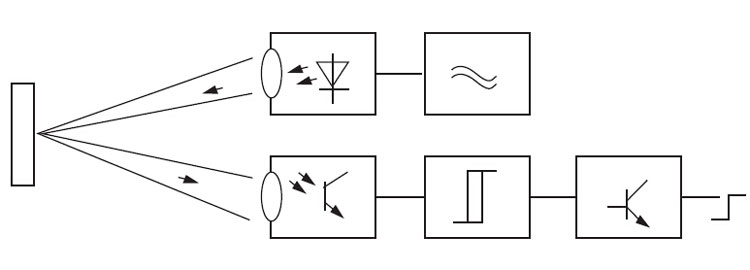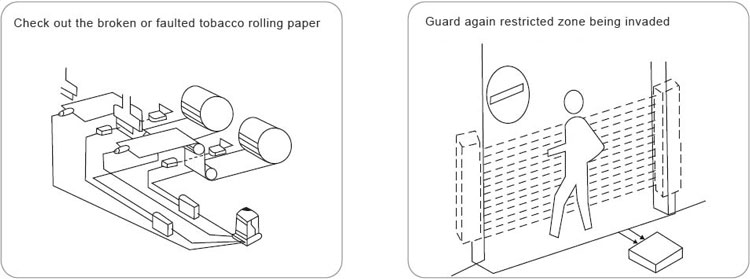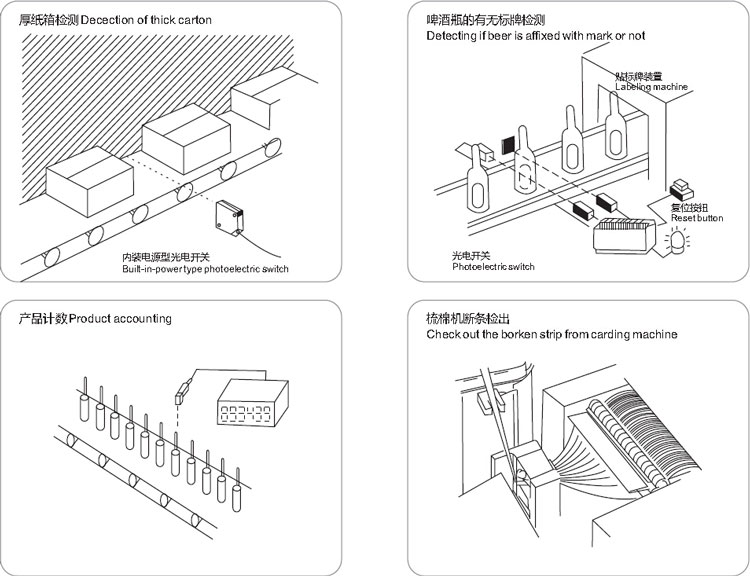

1. G: Photoelectric sensor.
2. Sub code No.(18, 50, 76.....).
3. Operating voltage(2: 90-250VAC ;3: 10-30VDC; 4: 12-240VDC/24-240VAC; 5: Special voltage).
4. Detection method( A: Diffuse type; B: Mirror reflex type; C: Through beam type).
5. Detection distance (05: 5cm ; 10: 10cm; 30: 30cm; 101: 10m).
6. Output method(N: NPN transistor output; P: PNP transistor output; J: Relay output; L: AC two-line output; S: NPN+PNP).
7. Output status(A: NO; B: NC; C: NO+NC).
8. Auxi function code(T1: Front delay; T2: Rear delay; Y: Oil proof; T: With connector; I: Special requirement).
| OVERALL DIMENSIONS | ||||
| Diffuse type | Detection distance | 10cm | ||
| 10-30VDC | NPN | NO | G13-3A10NA | |
| NC | G13-3A10NB | |||
| NO+NC | G13-3A10NC | |||
| PNP | NO | G13-3A10PA | ||
| 90-250VAC | NC | G13-3A10PB | ||
| NO+NC | G13-3A10PC | |||
| SCR Contro Hable silicon | NO | |||
| NC | ||||
| Relay output | ||||
| Retroreflective type | Detection distance | 1m | ||
| 10-30VDC | NPN | NO | G13-3B1NA | |
| NC | G13-3B1NB | |||
| NO+NC | G13-3B1NC | |||
| PNP | NO | G13-3B1PA | ||
| 90-250VAC | NC | G13-3B1PB | ||
| NO+NC | G13-3B1PC | |||
| SCR Contro Hable silicon | NO | |||
| NC | ||||
| Relay output | ||||
| Through beam | Detection distance | 3m | ||
| 10-30VDC | NPN | NO | G13-3C3NA | |
| NC | G13-3C3NB | |||
| NO+NC | G13-3C3NC | |||
| PNP | NO | G13-3C3PA | ||
| 90-250VAC | NC | G13-3C3PB | ||
| NO+NC | G13-3C3PC | |||
| SCR Contro Hable silicon | NO | |||
| NC | ||||
| Relay output | ||||
| DC/SCR Control output | DC:200mA | |||
| DC/AC Consumption current | DC<15mA | |||
| DC/AC Response time | Dc<2ms | |||
| Directional angle | 3。-10。 | |||
| Detected object | transparent or opaque body | |||
| Working environment temperature | 25℃~+55℃ | |||
| Intensity of illumination of working environment | Sunlight under 1000LX incandescent lamp under 3000LX | |||
| Shell material | Metal | |||
| Protection grade | IP54 | |||
The working principle of the photoelectric switch is that when the beam emitted by the emitter is blocked or partly reflected by the object,the beam receiver where by makes a judgment and reacts.



GET A QUOTE